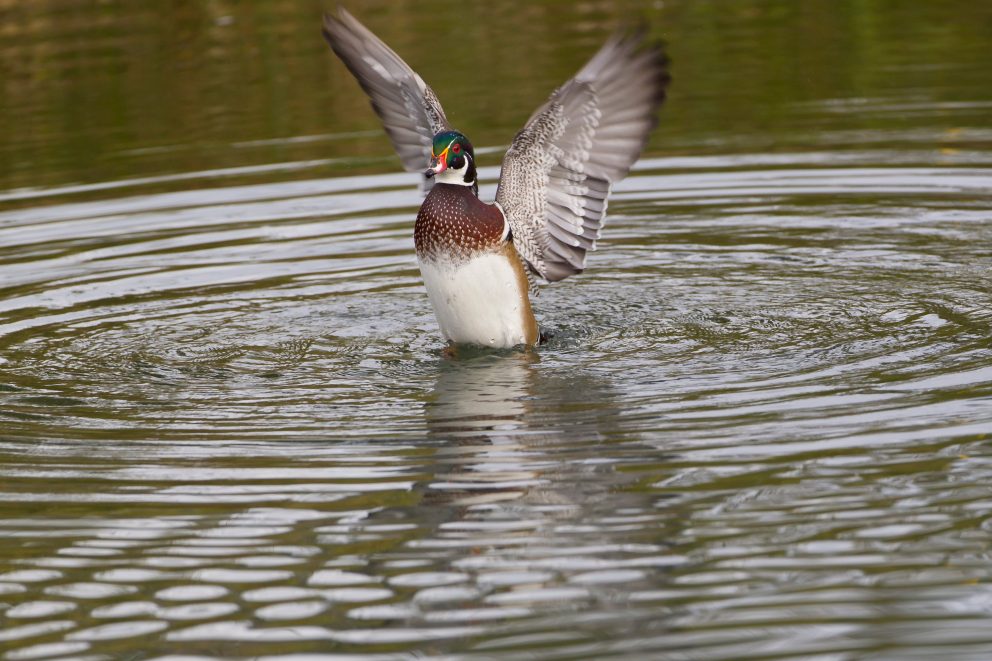- SCIENTIFIC NAME
- Aix sponsa
- CLASSIFICATION
- Bird
- LIFE SPAN
- 3-5 Years
- SIZE
- 18.5-21.3” | 1-2lbs
- STATE CONSERVATION STATUS
-
- State Protected
- FEDERAL CONSERVATION STATUS
- Least Concern
- GAME STATUS
- Game
- GAME TYPE
- Waterfowl
- Washoe
- Humboldt
- Pershing
- Churchill
- Mineral
- Lyon
- Douglas
- Carson City
- Storey
- Elko
- Lander
- Eureka
- White Pine
- Esmeralda
- Nye
- Lincoln
- Clark
Habitat & Range
Wood Ducks are unique among most waterfowl in that they need bodies of water that are near trees. They use lakes, ponds, and streams that are adjacent to wooded areas so they can nest in tree cavities. In Nevada, these ducks are found year-round in the western part and breeding in the northeastern part of the state.
- Lakes and reservoirs
- Rivers and streams
Threats
- Drought
- Habitat Loss
- Water Diversion
Natural History
Wood Duck females call to attract males, they pair for one season and may mate with a different duck the next season. Females are responsible for all parental care and nest building. They build their nests in cavities in trees and lay between six and fifteen eggs. However, some female Wood ducks will ‘dump’ their eggs in an already occupied nest for another female Wood duck to raise so some nests can have over twenty eggs in them. After hatching, ducklings leave the nest within 24 hours and drop into water or to the ground. They are dependent on the female for food.
Wood Ducks are omnivores, and they will feed on a wide variety of aquatic plants and aquatic invertebrates. Seeds, grasses, duckweed, berries, and other plants growing in and around the water make up the majority of their diet. They will also eat flies, caterpillars, snails, and beetles. Wood ducks are considered dabbling ducks and dip their heads in the water to forage.
Fun Facts














